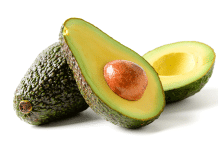The general rule for a good infant milk formula to choose for your baby is simply that it should be as close as possible to breast milk. Infant milk formulas are used as a substitute for breast milk, so they should have the same constituents as present in the human breast milk.
Let’s know what important constituents the human breast milk has in it.
Human breast milk has carbohydrates, proteins, fats, minerals, vitamins, hormones, and digestive enzymes. Other important constituents include immune cells, such as macrophages. The milk also contains stem cells and many other bioactive molecules. Some of these molecules are both protein and lipid-derived, whereas some molecules are only derived from proteins such as oligosaccharides. These human milk oligosaccharides have anti-infective action. These bind with the pathogens in the gastrointestinal tract and keep the pathogens from reaching the intestinal wall and causing infection. Oligosaccharides also make possible a balanced and diverse microbiota and help colonize most of the infant biome. Microbiota plays an important role in producing proper immune responses.
You will love these facts about new born babies.
An infant formula is made to mimic the composition of breast milk. The infant formula should have constituents that contribute to the normal physical development and should have an appropriate amount of proteins in a form that can be used by the infants. The formulas are not for those infants who have abnormal medical or dietary problems. The process of manufacturing the formulas should be highly regulated and monitored.
An infant formula is made to mimic the composition of breast milk. The infant formula should have constituents that contribute to the normal physical development and should have an appropriate amount of proteins in a form that can be used by the infants. The formulas are not for those infants who have abnormal medical or dietary problems. The process of manufacturing the formulas should be highly regulated and monitored.
Infant formulas are generally available in powder form, a liquid form, and ready to feed form. There are three major forms of infant formulas: Formulas based on cow-milk, formulas based on soy, and then there is a specialized formula. The specialized formulas are usually given when the babies are unable to tolerate the cow milk or soy-based formulas or are allergic to them.
The general rule for acceptable infant formula is that it should have appropriate amounts of carbohydrate, protein, fat, minerals, vitamins, and water. All these important components which are added to the formula should be in between a range of maximum and minimum values for them to be effective. The range has to be maintained throughout the shelf life of the formula. The quantity of these components should also have an established history of safe use in infants.
In the case of amino acids to be added in the formula, only the L form of amino acids is allowed. D form amino acids are prohibited as they can cause D-lactic acidosis. Fructose also should not be made a part of the formula as it can cause fructose intolerance. Hydrogenated fats and oils are also not permitted. Any such procedure which could cause product deterioration is also not allowed.
The reformulation of the product should be based on nutritional and medical findings. The manufacturers of the formula should also be able to demonstrate that the formula will sustain development and physical growth over a period of 120 days when it is likely to be the only source of nutrition for the infant.
The World Health Organization recommends that unmodified cow-milk and unmodified goat-milk should not be given to infants. Federal and local agencies of different countries monitor and control infant formula manufacturing practices based on the guidelines provided by the World Health Organization.
A point worth mentioning is that the structural diversity and the high concentration of oligosaccharides found in human milk are unique. That is the reason why the gut microbiota of formula-fed babies is generally weak. Breastfed infants have generally uniform and more stable populations of oligosaccharide compared with babies who are formula-fed. Therefore manufacturers are working on adding probiotics to formula milk which will result in the control of diarrhea in formula-fed babies and will make it more similar to breast milk.
If you have any questions about the topic, please mention them in the comment section.
Until Next Time,
Team Doctor ASKY!





















